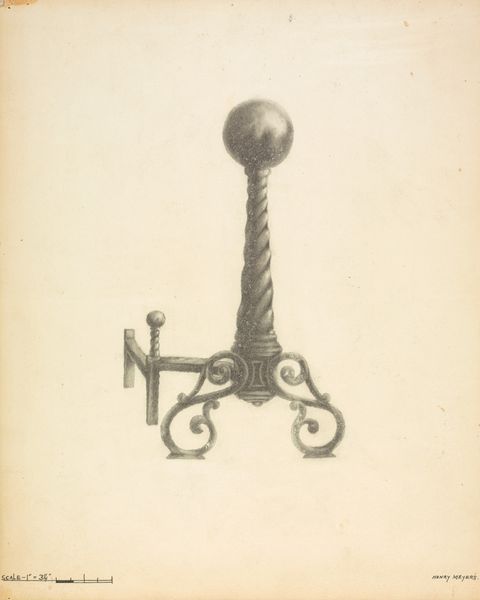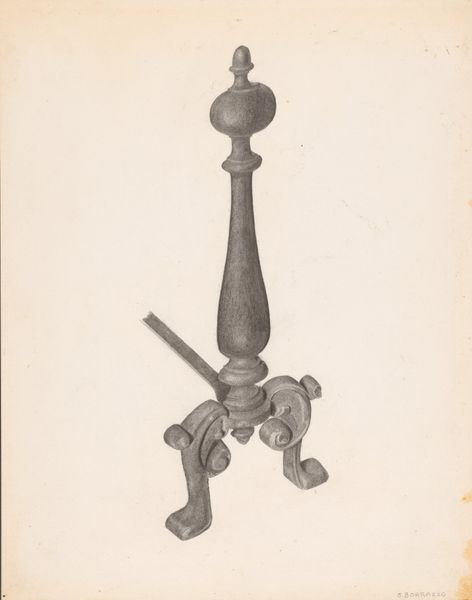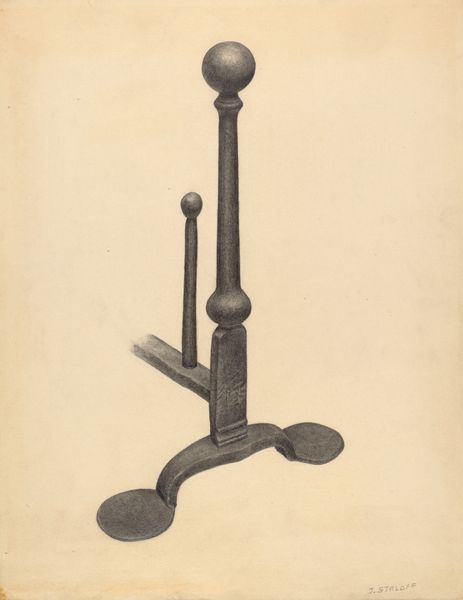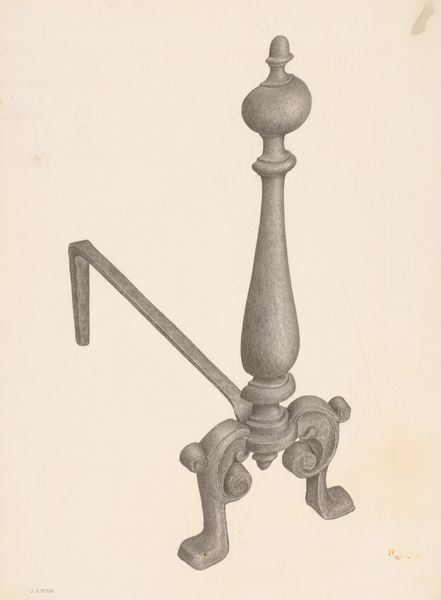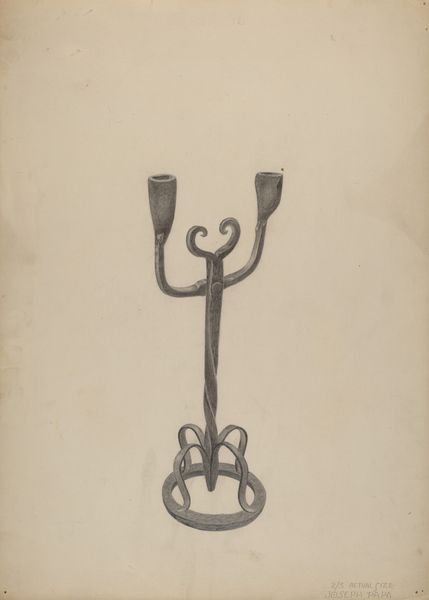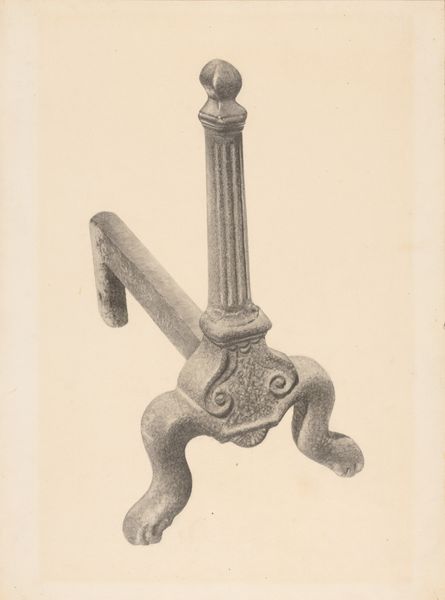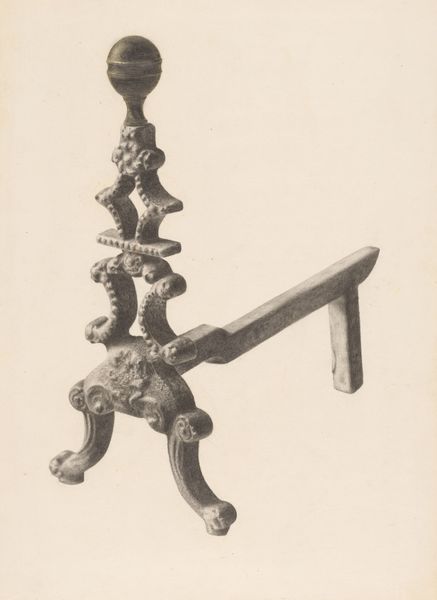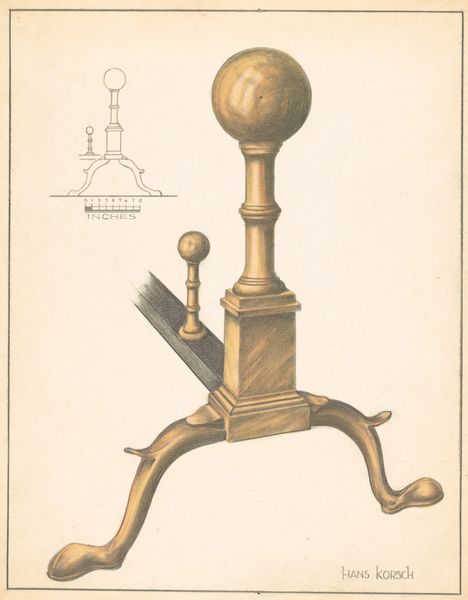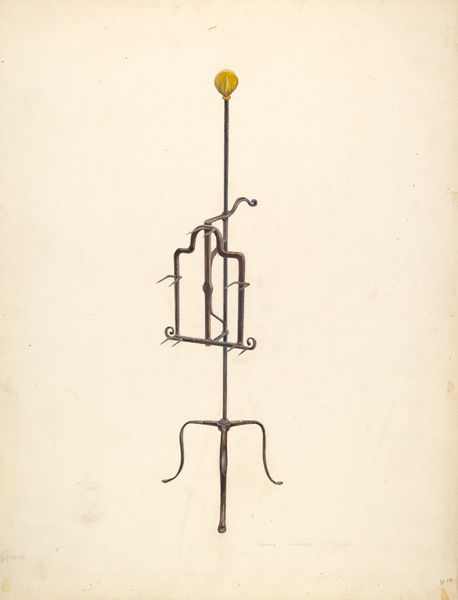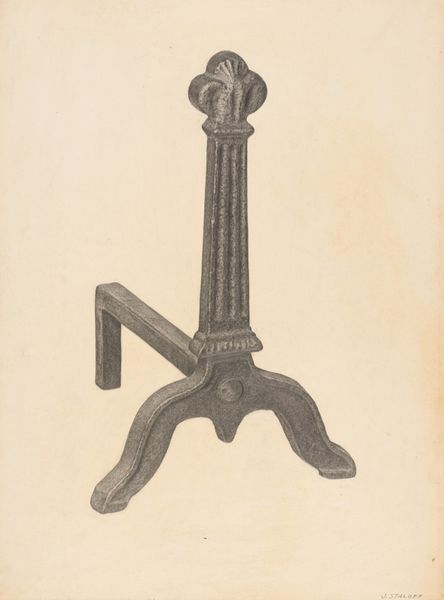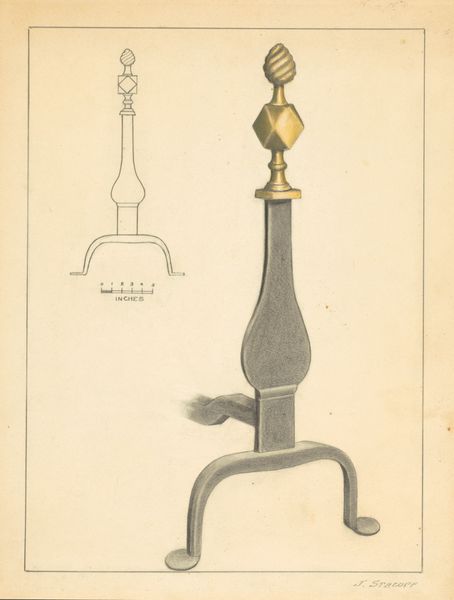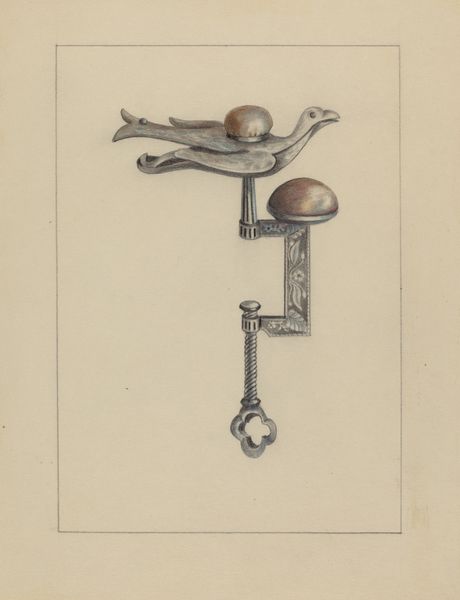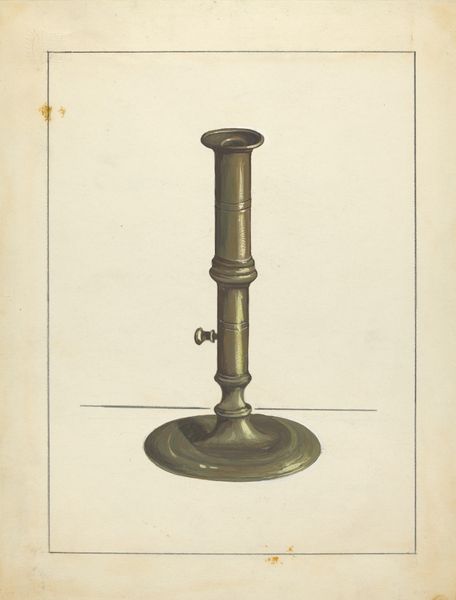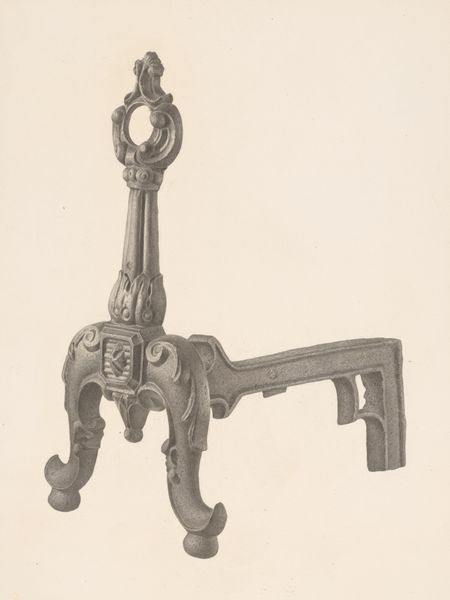
drawing, pencil
#
drawing
#
pencil
#
academic-art
Dimensions: overall: 28.8 x 21.9 cm (11 5/16 x 8 5/8 in.) Original IAD Object: 21" high; 11" wide
Copyright: National Gallery of Art: CC0 1.0
Curator: What we have here is a pencil drawing, circa 1938, by Henry Meyers titled "Wrought Iron Andirion". Editor: It possesses a rather ghostly elegance. The swirling ironwork depicted with such precision, but also softness, hints at another era. It’s both utilitarian and oddly decorative. Curator: That is an astute observation. Consider, though, that functional items like andirions were elevated through design to communicate a certain status in the interwar period. Meyers may well be examining the socio-economic meanings attached to domestic objects like this. The andiron transcended mere utility. Editor: Yes, the meticulous detail almost removes it from function. It's less about stoking a fire and more about presenting a… perfectly arranged tableau. It's a formal study, an exercise in line and shadow. Notice how Meyers captures the light reflecting on the spherical top, that perfect gradation. It pulls my eye in. Curator: Precisely, and I think that says much about the societal aspirations embodied in such a common object. Meyers’ precise technique gives it weight and validity, implying how integral this class of material good had become to society at that time. It implies cultural worth. Editor: But consider its lack of color! It’s stark in a way that accentuates its contours. The grey scale accentuates those graceful curves, and contrasts beautifully with the rigid lines of its supporting legs. This makes me wonder about Meyer's focus. Is it cultural critique or an exploration of form? Curator: I see it as difficult to divorce one from the other. Meyers had been making drawings, in addition to architectural renderings and model making, for roughly four years, prior to focusing full-time on wrought iron design for Fiske Company. Editor: Still, the drawing has this quality that makes us consider objects in an altogether fresh way, detached from practical considerations. He isolates the andirion, forcing us to examine it. I feel a similar sentiment in some Bauhaus metalworks. Curator: Yes, absolutely! The formal rendering draws a social class that can contemplate objects removed from life as necessity and places them solely inside life as luxury. Editor: Indeed. I walk away seeing both its artistic composition and its commentary. Curator: A dual vision; Meyers makes the andirion burn anew with questions.
Comments
No comments
Be the first to comment and join the conversation on the ultimate creative platform.
